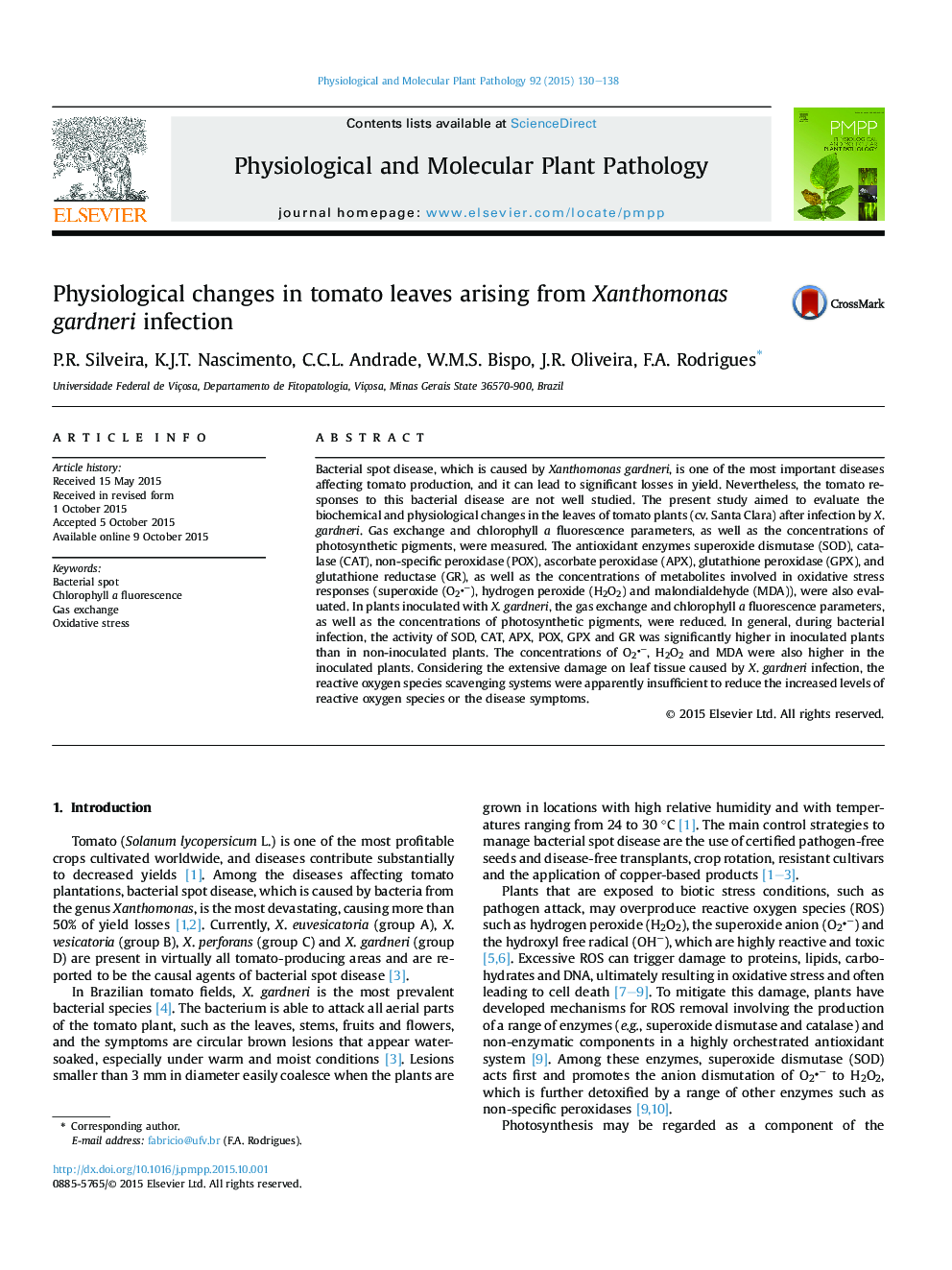| کد مقاله | کد نشریه | سال انتشار | مقاله انگلیسی | نسخه تمام متن |
|---|---|---|---|---|
| 2836252 | 1570847 | 2015 | 9 صفحه PDF | دانلود رایگان |

• The antioxidant enzymes did not contribute to decrease the bacterial spot symptoms.
• On infected leaves, the values of the chlorophyll a fluorescence parameters and the concentrations of photosynthetic pigments decreased
• Initial reductions in photosynthesis may be initially associated with a reduction in stomatal conductance on infected leaves.
Bacterial spot disease, which is caused by Xanthomonas gardneri, is one of the most important diseases affecting tomato production, and it can lead to significant losses in yield. Nevertheless, the tomato responses to this bacterial disease are not well studied. The present study aimed to evaluate the biochemical and physiological changes in the leaves of tomato plants (cv. Santa Clara) after infection by X. gardneri. Gas exchange and chlorophyll a fluorescence parameters, as well as the concentrations of photosynthetic pigments, were measured. The antioxidant enzymes superoxide dismutase (SOD), catalase (CAT), non-specific peroxidase (POX), ascorbate peroxidase (APX), glutathione peroxidase (GPX), and glutathione reductase (GR), as well as the concentrations of metabolites involved in oxidative stress responses (superoxide (O2−), hydrogen peroxide (H2O2) and malondialdehyde (MDA)), were also evaluated. In plants inoculated with X. gardneri, the gas exchange and chlorophyll a fluorescence parameters, as well as the concentrations of photosynthetic pigments, were reduced. In general, during bacterial infection, the activity of SOD, CAT, APX, POX, GPX and GR was significantly higher in inoculated plants than in non-inoculated plants. The concentrations of O2−, H2O2 and MDA were also higher in the inoculated plants. Considering the extensive damage on leaf tissue caused by X. gardneri infection, the reactive oxygen species scavenging systems were apparently insufficient to reduce the increased levels of reactive oxygen species or the disease symptoms.
Journal: Physiological and Molecular Plant Pathology - Volume 92, October 2015, Pages 130–138